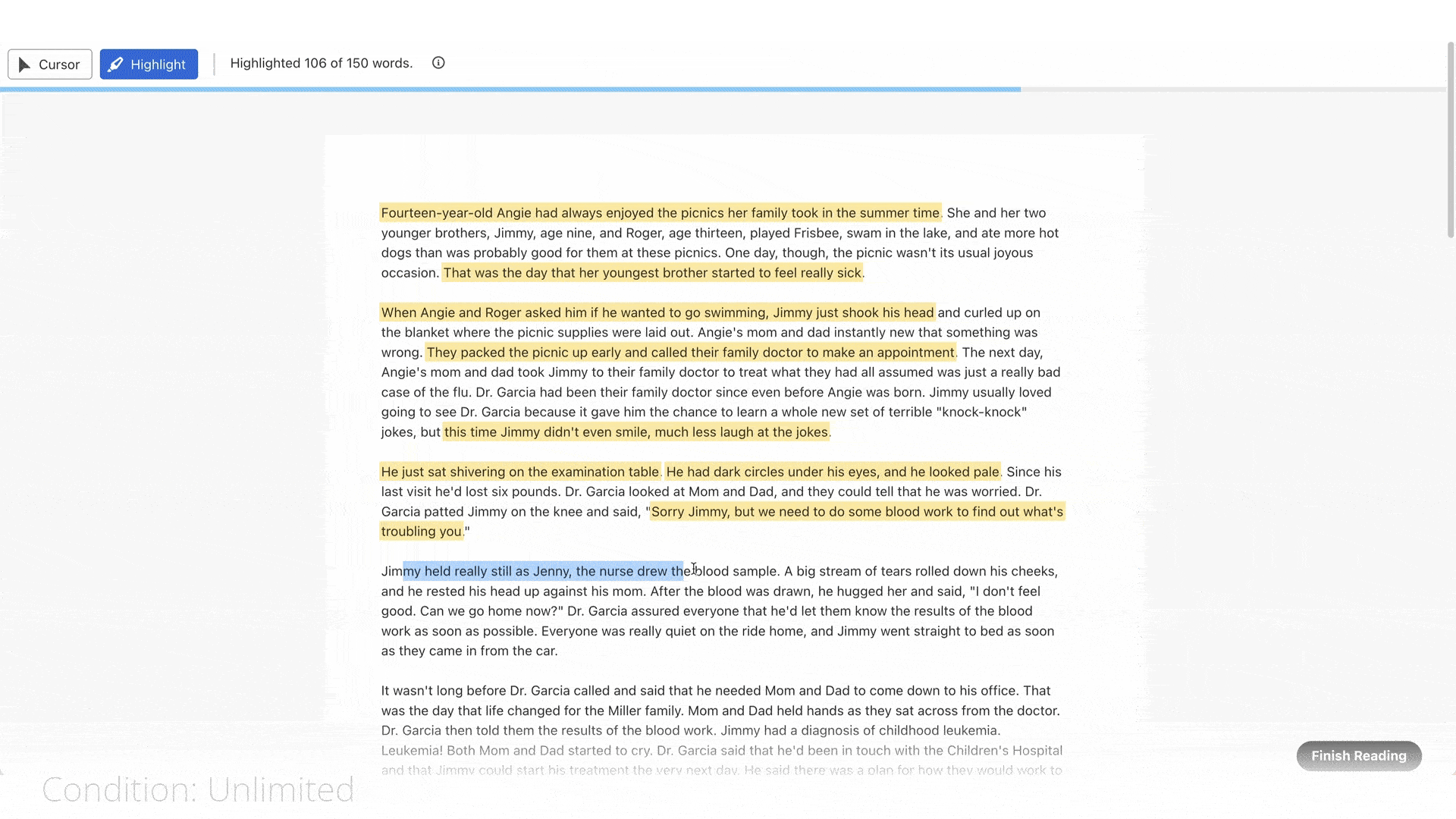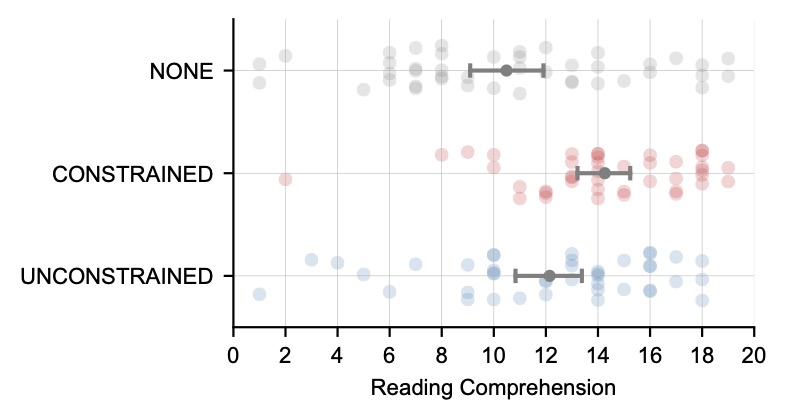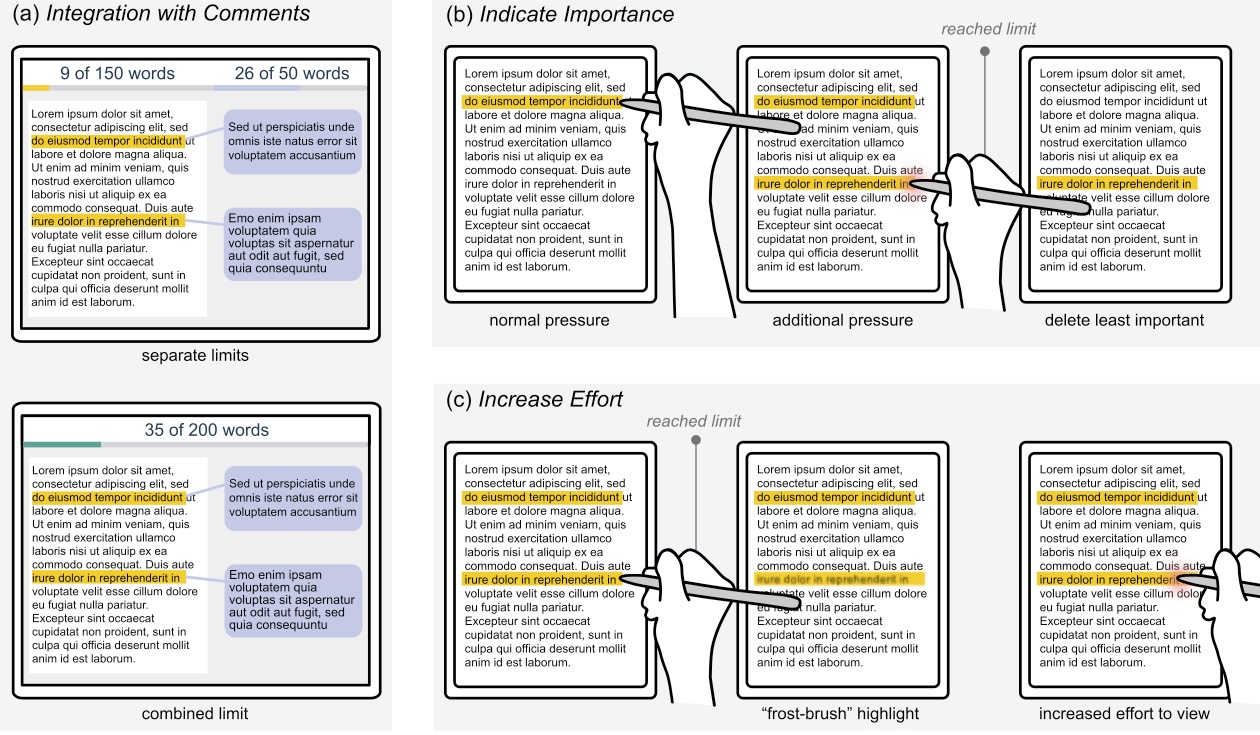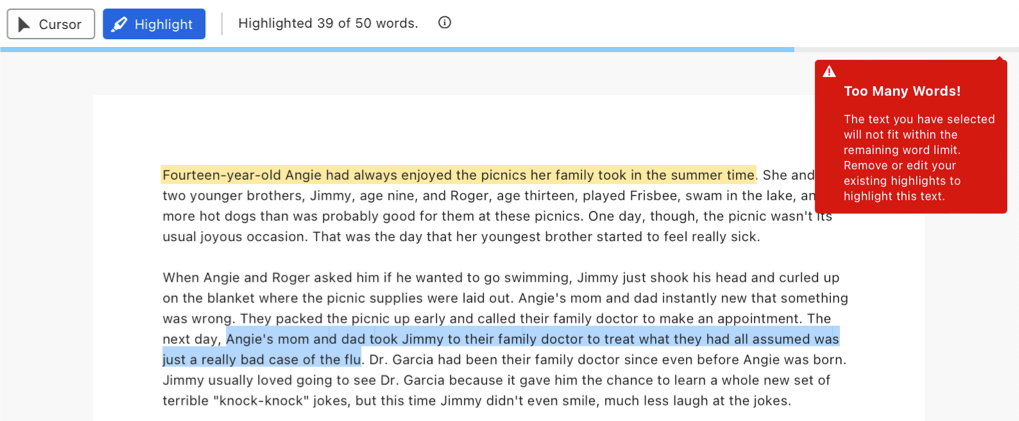We study whether a text highlight constraint can improve reading comprehension. Our results show that constraining the number of words that can be highlighted in a document reader can improve reading comprehension scores.
Quick Facts
- We conducted a large-scale study to evaluate the effect of a text highlight constraint on reading comprehension.
- We found that a text highlight constraint can improve reading comprehension scores, as readers need to be more selective with their highlights.
Abstract
Highlighting text in a document is a common active reading strategy to remember information from documents. Learning theory suggests that for highlights to be effective, readers must be selective with what they choose to highlight. We investigate if an imposed user interface constraint limiting the number of highlighted words in a document reader can improve reading comprehension. A large-scale between-subjects experiment shows that constraining the number of words that can be highlighted leads to higher reading comprehension scores than highlighting nothing or highlighting an unlimited number of words. Our work empirically validates theories in psychology, which in turn enables several new research directions within HCI.
Experiment
We conducted a between-subjects experiment with 127 participants. Participants read a short story and could either highlight nothing, an unlimited number of words, or up to 150 words.
If participants in the constrained condition attempted to highlight more than 150 words, the system would not allow them to do so, forcing the reader to revise their highlights.

The next day, participants completed a reading comprehension test consisting of 20 multiple choice questions in 5 minutes.
Results
Participants who could only highlight up to 150 words scored significantly higher on the reading comprehension test than those who could highlight an unlimited number of words or nothing at all.

Several participants noted how the text highlight constraint forced them to be more selective with their highlights, which was beneficial, for example:
It forced me to highlight only the parts I thought were more important. In turn, this forced me to understand the story and main themes more. – P34
Highlight were typically shorter, focusing on keywords, which is recommended by university learning centres, for example:

Applications for HCI

Integrating a text highlight constraint into a document reader is an “easy win” that can improve reading comprehension, but there are interesting design decisions that the HCI community can explore. For example, how should highlight constraints be integrated with comments? How can the deletion of highlights be automated? How can “soft” constraints that increase user effort be used instead of fixed, “hard” constraints?
We hope our work will inspire new features and interactions within document reader software that are designed around constraints.
Publication
Nikhita Joshi and Daniel Vogel. 2024. Constrained Highlighting in a Document Reader can Improve Reading Comprehension. In Proceedings of the 2024 CHI Conference on Human Factors in Computing Science (CHI 2024). DOI: https://doi.org/10.1145/3613904.3642314.
BibTeX
@inproceedings {
Joshi2024ConstrainedHighlighting,
author = {Joshi, Nikhita and Vogel, Daniel},
title = {Constrained Highlighting in a Document Reader can Improve Reading Comprehension},
booktitle = {Proceedings of the SIGCHI Conference on Human Factors in Computing Systems},
series = {CHI 2024},
year = {2024},
location = {Honolulu, HI, USA},
url = {https://doi.org/10.1145/3613904.3642314},
doi = {10.1145/3613904.3642314},
publisher = {ACM},
address = {New York, NY, USA},
numpages = {10}
}
Contact Us
Blog post template by Johann Wentzel.
